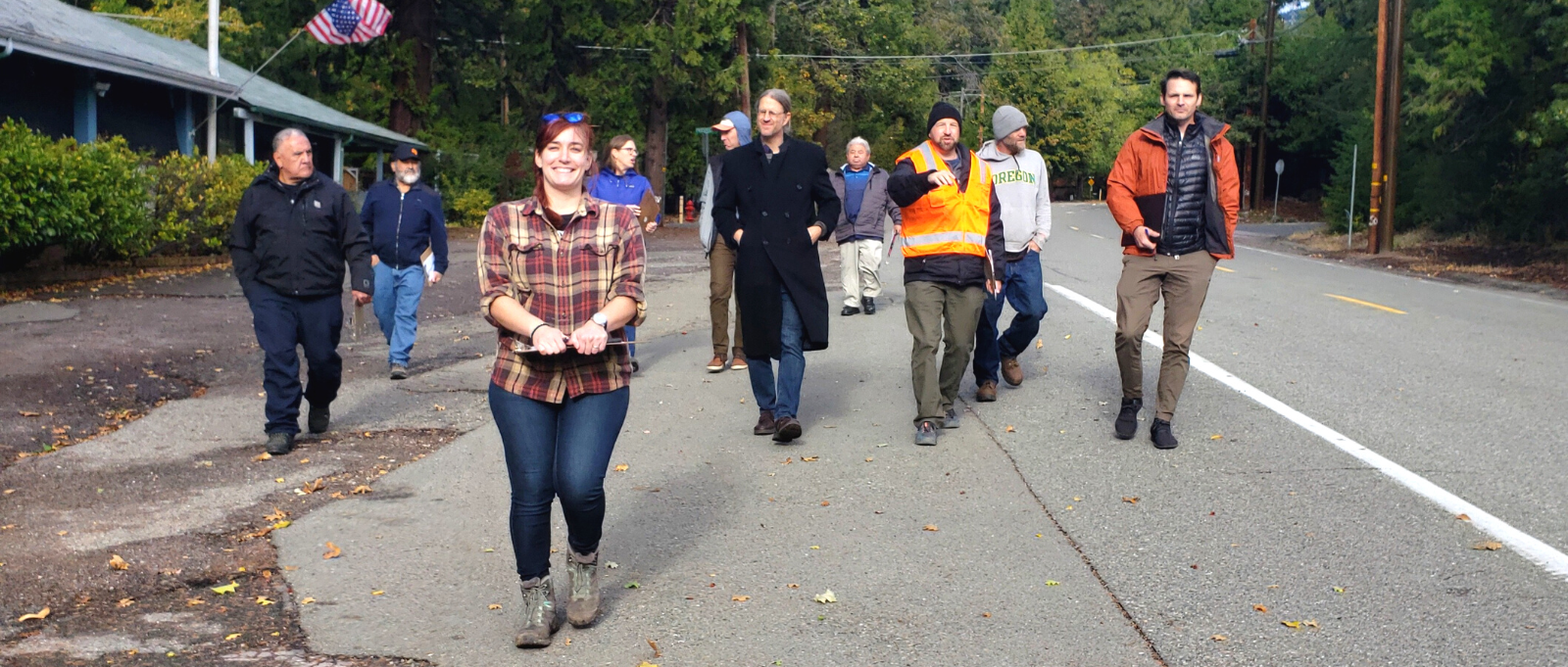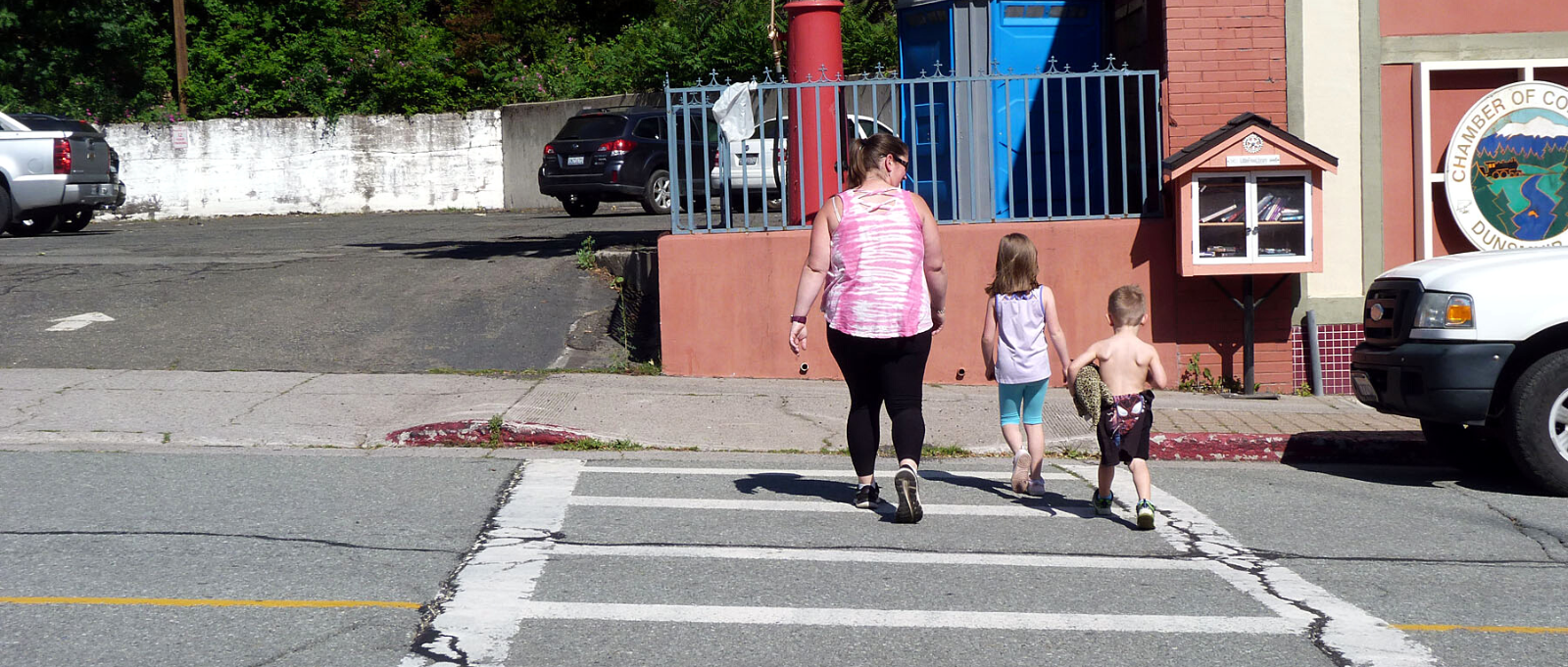February 28, 2024
Topic
This month saw the adoption of the City of Dunsmuir Active Transportation Plan (ATP), the culmination of months of community engagement, visioning, and clarifying conversations toward creating more safe and accessible transportation options.
Five miles long and an average quarter-mile wide, Dunsmuir is set against a mountainous backdrop in rural Siskiyou County. The city is home to 1,707 people, with a small downtown and compact residential lots. Like many communities in California, Dunsmuir is under threat of wildfire, so disaster preparedness and climate adaptation are urgent concerns.
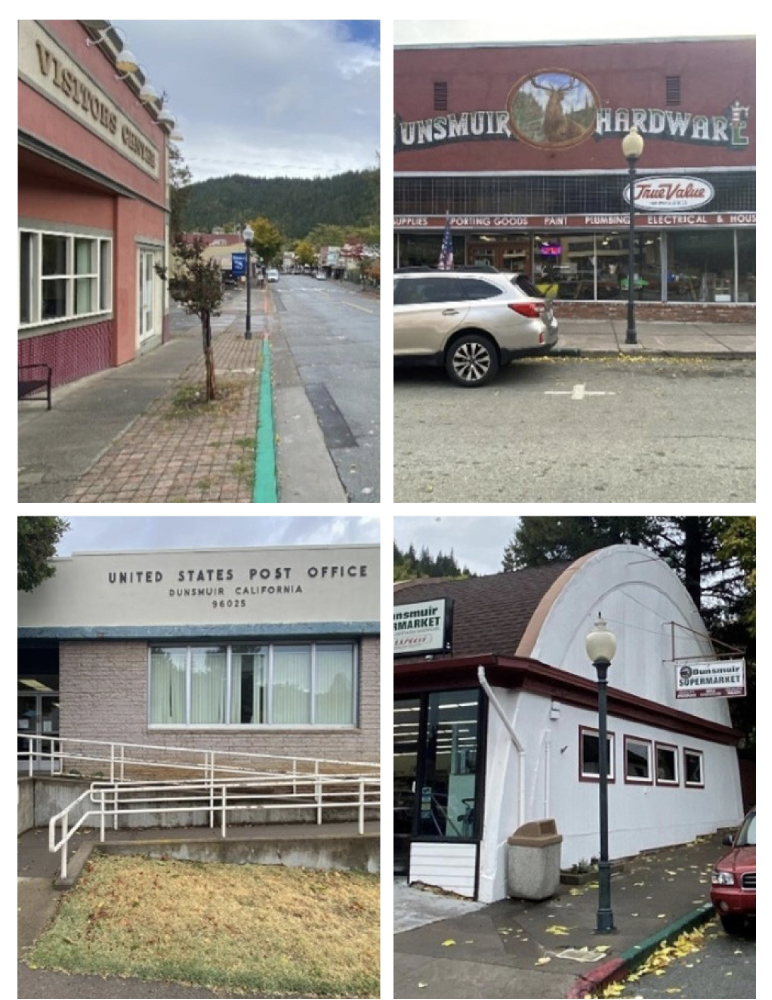
The active transportation network in Dunsmuir is incomplete and aging. Many residential streets are missing sidewalks, and existing sidewalks are in need of repair. The bicycle network is lacking, the only commute-based bicycle infrastructure being a short bike lane on Dunsmuir Avenue that leads to a multi-use path.
With a higher-than-average portion of the population under age 18 or over age 65, Dunsmuir leaders know it is important to create a safe and supportive transportation environment for all ages and abilities. Additionally, compared to the County and State, Dunsmuir has a higher percentage of commuters traveling less than ten minutes, some of whose commutes could potentially convert to active modes of travel.
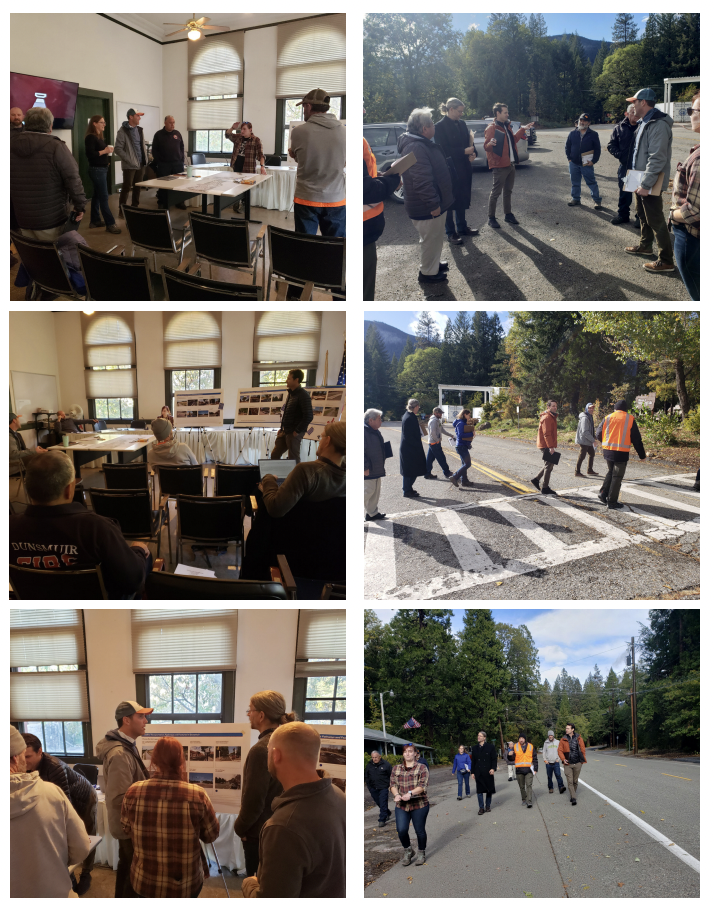
Outreach, Shared Visioning, and Community-Driven Strategies
In 2021, CivicWell supported the City of Dunsmuir in applying for a Caltrans Sustainable Communities Grant. With funding from the grant, the City enlisted CivicWell and KTUA, a San Diego-area planning and landscape design firm focused on creating healthy and sustainable places, to help with plan development and an extensive community outreach effort. The goals of the ATP were to:
- Engage the public to learn about the needs of bicyclists and pedestrians in Dunsmuir
- Identify issues and deficiencies in the City’s walking and biking infrastructure
- Develop solutions to address needs and deficiencies to ensure that cyclists and pedestrians of all ages and abilities have improved access, safety, and connectivity in and around Dunsmuir
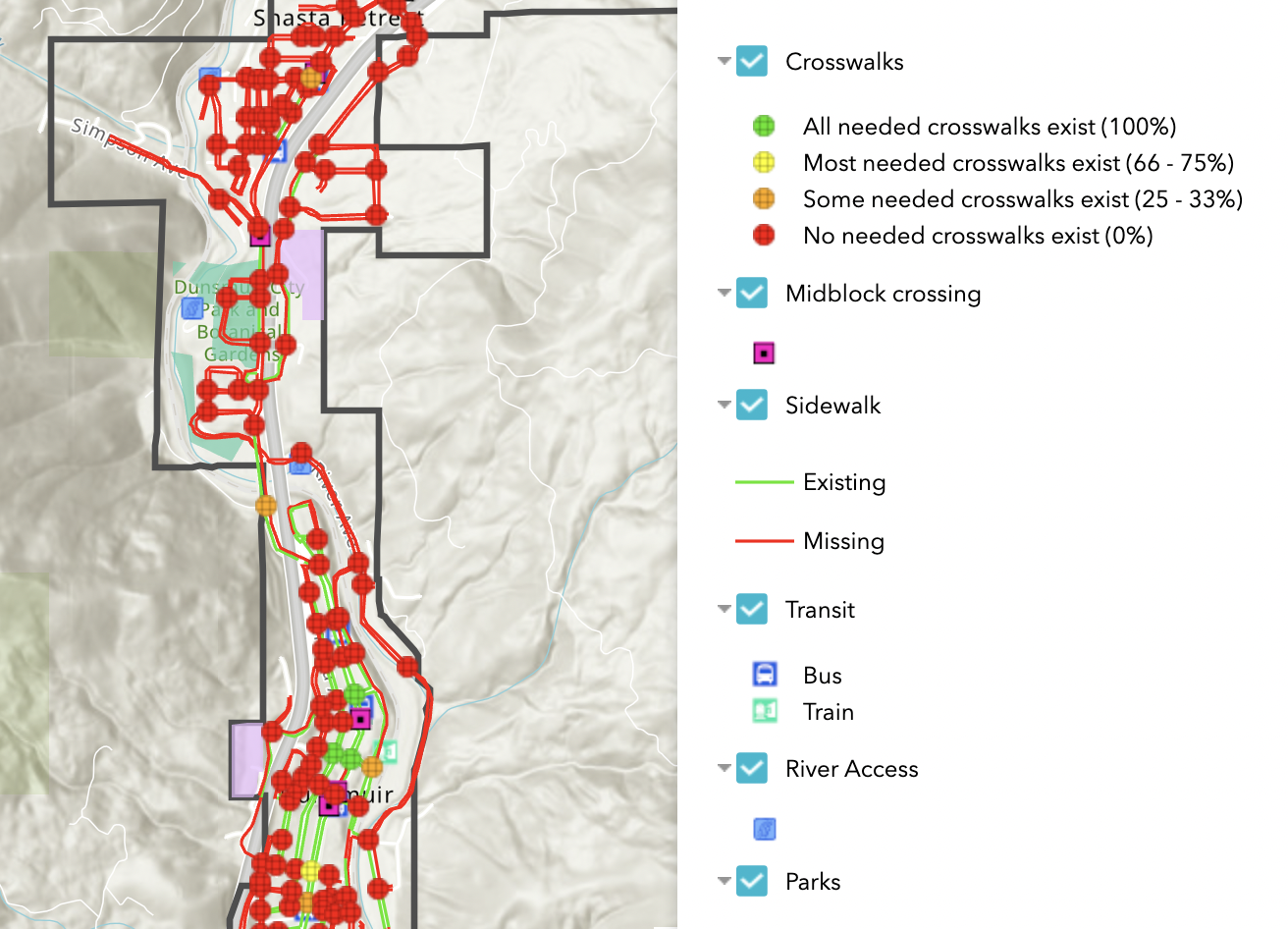
Throughout the project span, community members, businesses, community-based organizations, and decision-makers from the City and regional agencies were engaged to affirm community values, needs, and aspirations; identify and evaluate key issues; and develop a prioritized list of projects, solutions, and designs for pedestrian, bicycle, and transit improvements.
The project team kicked off community engagement in November 2022 with the first Advisory Group meeting to introduce participants to the project. Members of the Advisory Group participated in a walk audit and an interactive activity to reflect on issues, barriers, and potential solutions.
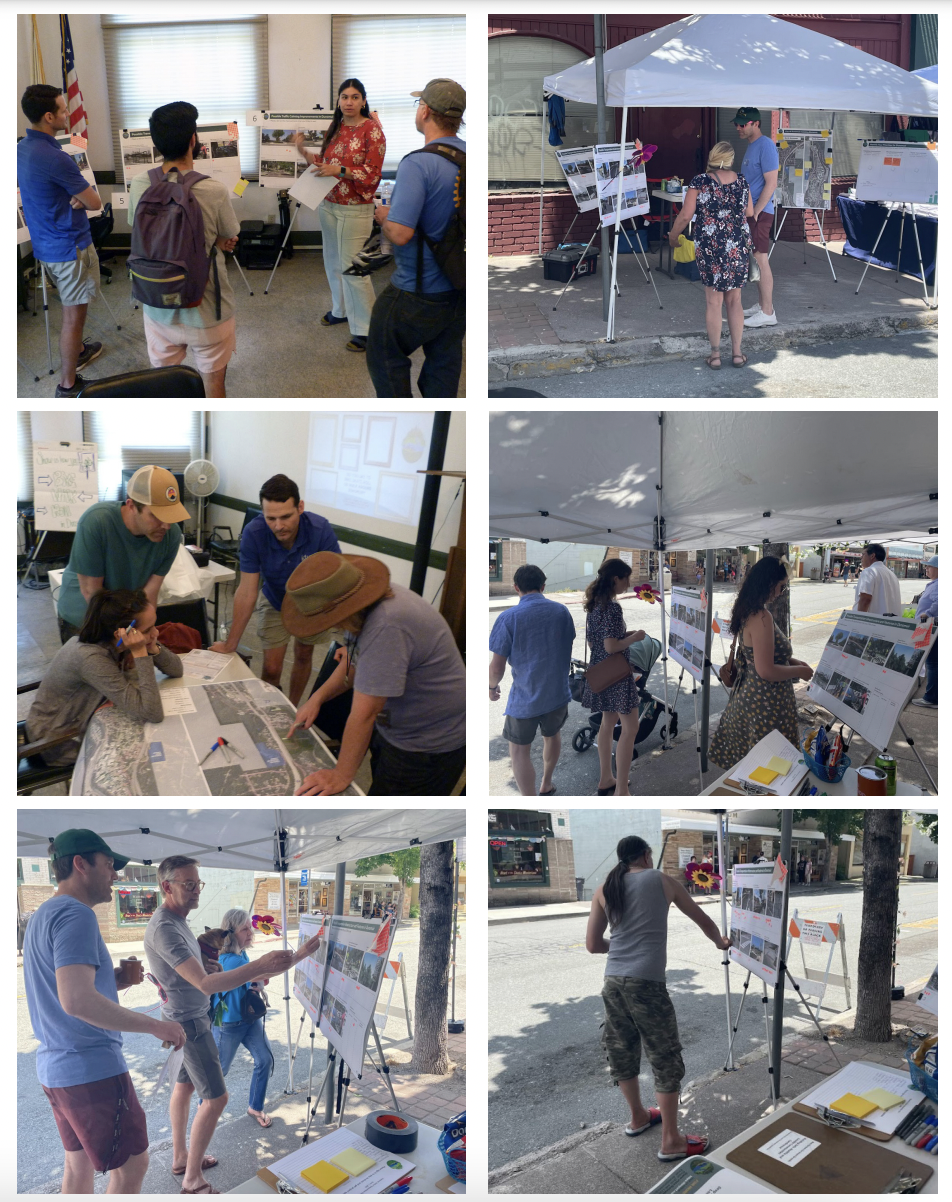
A robust campaign of virtual and in-person community engagement followed, including a community survey, a project website featuring an interactive comment map for community members to write comments and concerns about specific streets and intersections, focus groups, email and social media, a multi-day Community Design Charrette, and informational pop-ups with the Planning Commission and at the local farmer’s market.
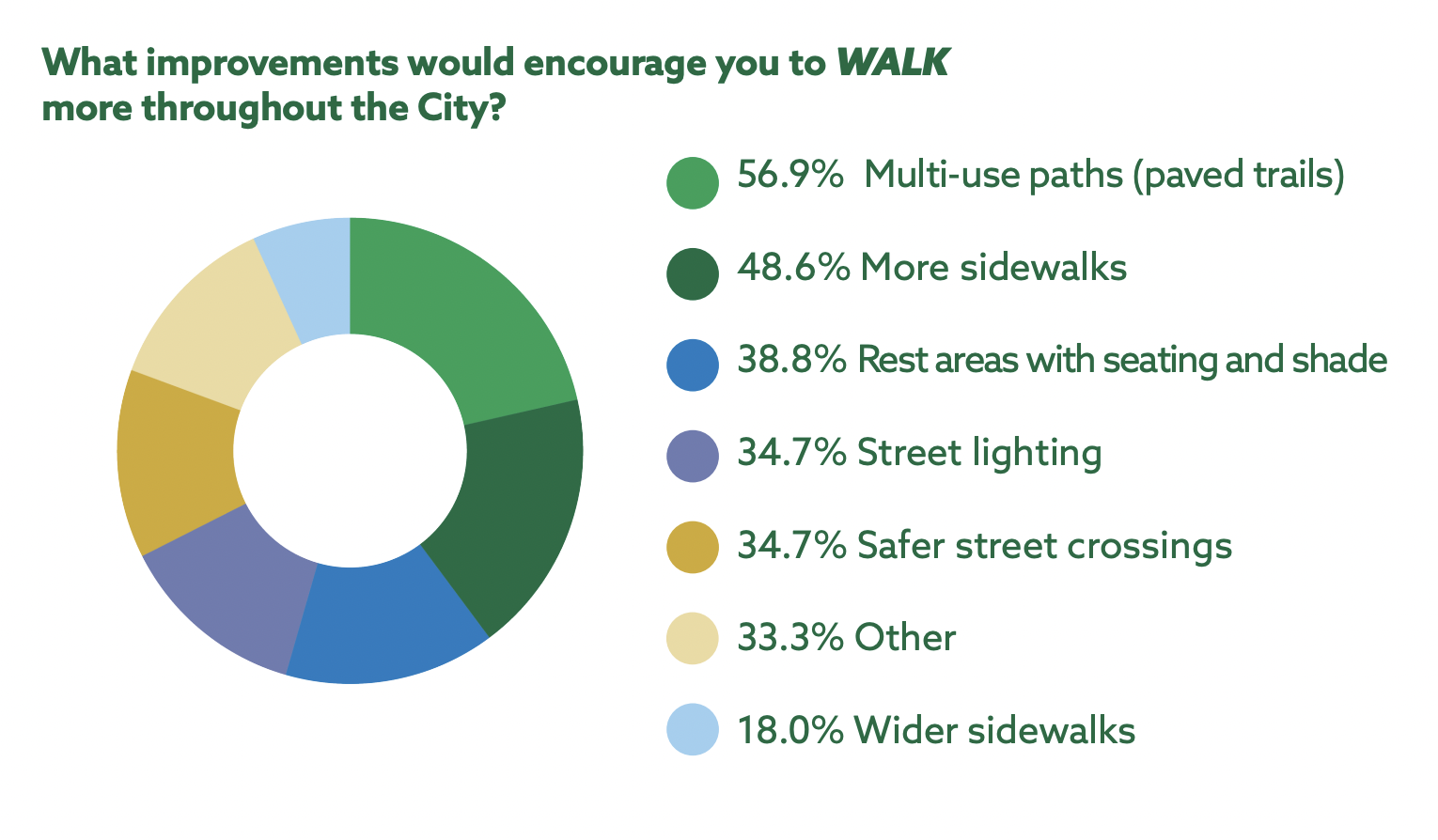
The community engagement process was designed to be as equitable and inclusive as possible, and was iterative based on feedback from community members. The project team incorporated direct mail and hard copy drafts so that people without online access had opportunities to provide input. In order to gather insight from young people, CivicWell Project Manager Diana Voss-Gonzalez arranged to have a visioning workshop with local high school seniors.
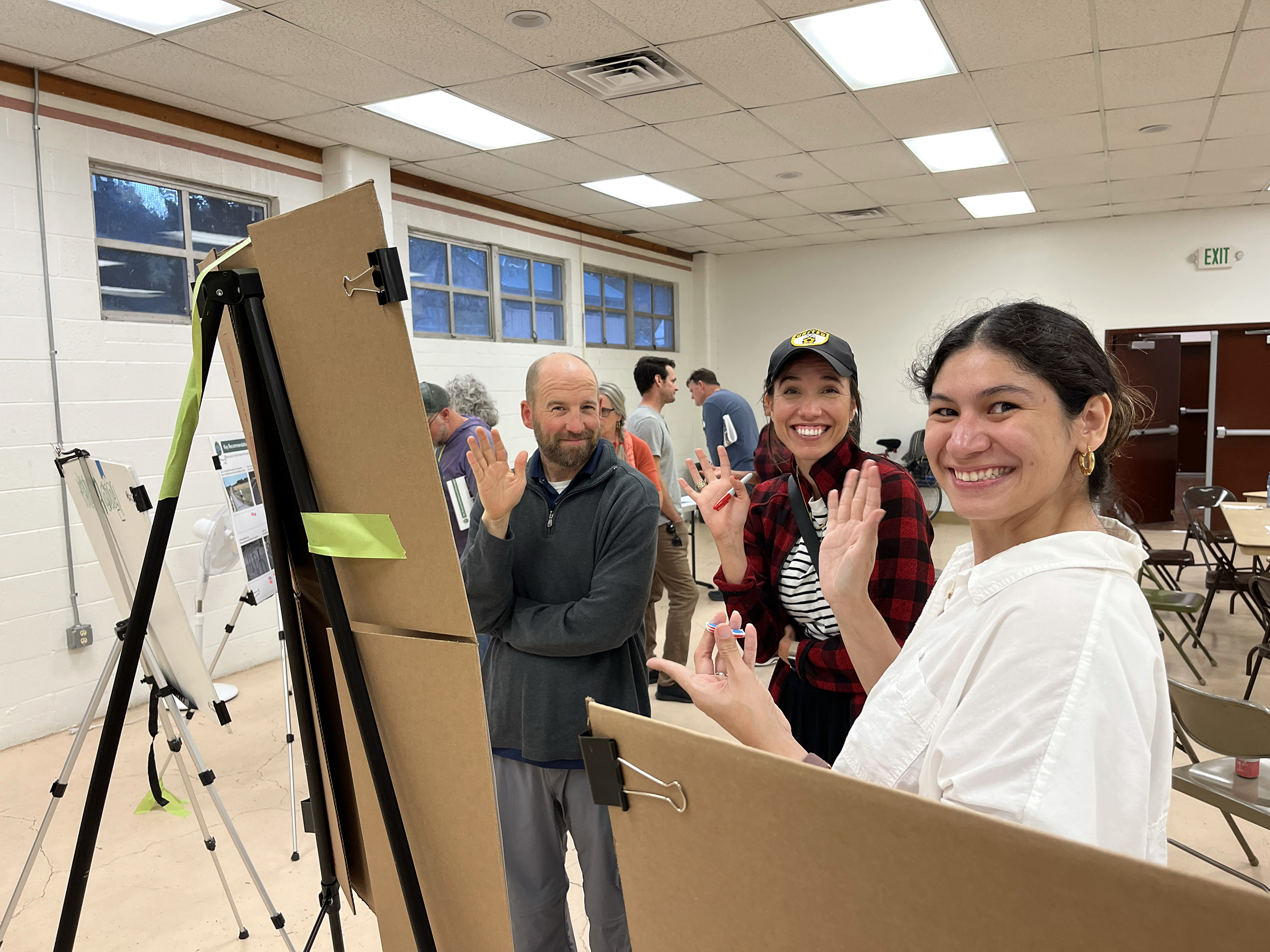

Presenting the Draft Plan to the Community
After gathering all the community input, the project team hosted a Draft Plan Workshop in October 2023 to present potential projects for prioritization. Bicycle projects include new multi-use paths, bike paths, and buffered bike lanes, as well as proposals for connecting existing bike routes. Pedestrian and traffic calming projects range from spot treatments such as installing high-visibility crosswalks or speed humps, to larger options like roundabouts or street reconfigurations for placemaking opportunities.
During the event, all projects were displayed and community members voted for the ones they thought should be prioritized. The top five recommendations—explored in detail in the ATP (see below for example)—include specific locations for closing gaps between multi-use paths or popular local destinations; and creating a new separated bike path, multi-use path, and a path to access Dunsmuir High School.
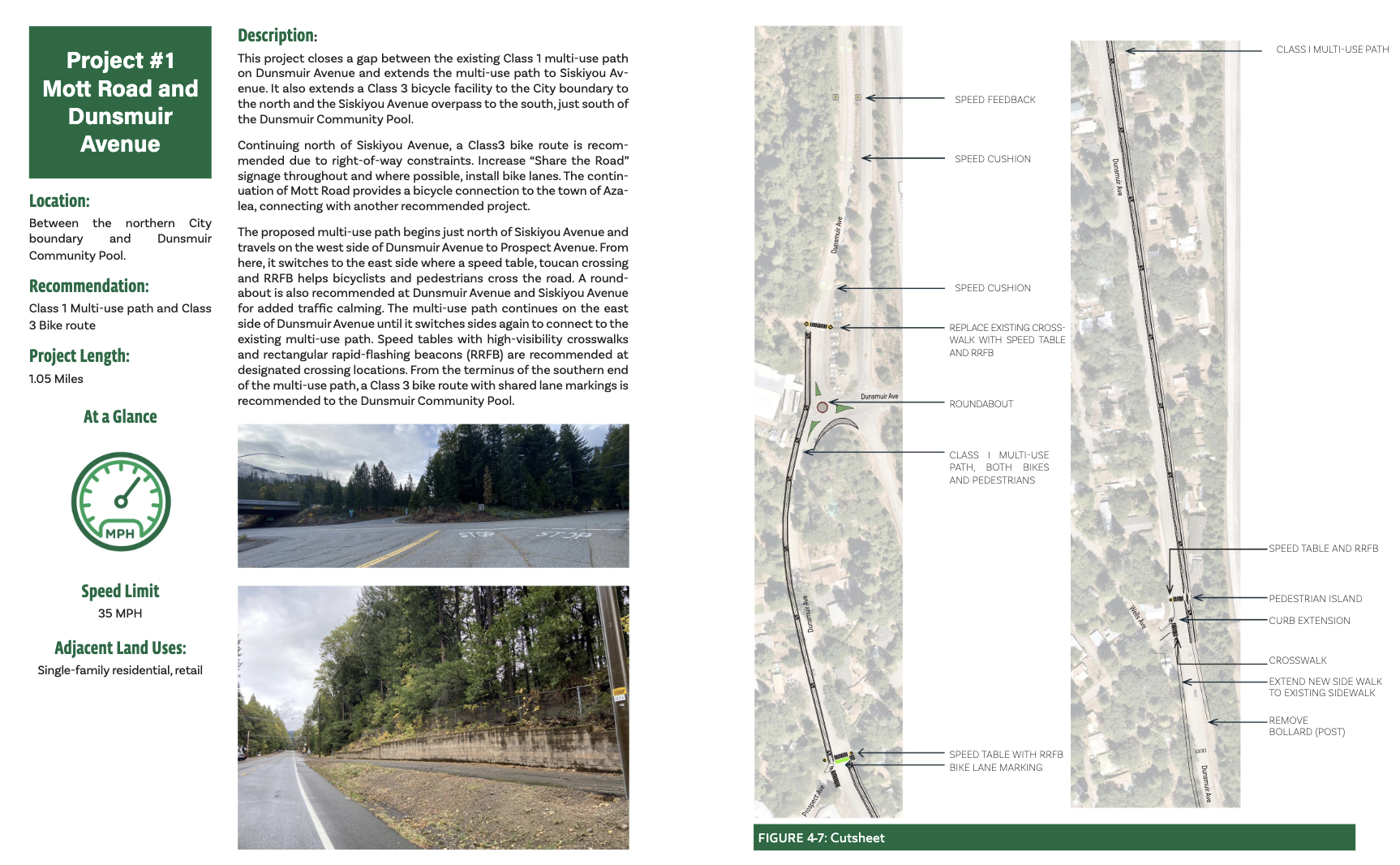
The proposed recommendations in the ATP support the City of Dunsmuir’s short-term and long-term goals related to active transportation and roadway safety and are also designed to help the City allocate funds as they become available and compete for grant funds as opportunities arise. The ATP highlights implementation strategies from volunteer and job training programs to an evaluation of potential funding sources. Additionally, it highlights holistic actions the City can take to encourage community use of the improved transportation infrastructure, from campaigns like National Bike Month to investment in a Bikeshare Pilot Program.
Read the Draft Dunsmuir Active Transportation Plan
Active Transportation Plan Adoption and Next Steps
After a public review period, the project team presented the final ATP earlier this month at the Dunsmuir City Council meeting, where it was enthusiastically adopted. The success of the plan is in part due to Dunsmuir’s Mayor, City Manager, and Financial Director, who had all been active throughout the process, helping get the word out and foster community engagement.
The Power of Community-Centered Planning Projects
At CivicWell we know that innovation happens when communities name their own challenges and define their own visions. Through collaborative partnerships, technical assistance, and capacity building, we support and equip communities to bring those visions to life.
Our team works with jurisdictions at no cost, to scope projects and develop competitive proposals. We are collaborating with a number of other cities on projects nearing completion, and we invite you to learn more about those and contact us here if you would like to explore how CivicWell can support your jurisdiction in transforming your vision into action:
- Newman Corridors Improvement and Multi-Benefit Community Connectivity Plan, in partnership with Opticos Design, Inc. and Toole Design. Addressing and improving residents’ experience of using travel corridors. Producing ideas and concepts to improve safety, experience, and connectivity between schools, parks, and shops around Newman.
- Corcoran Active Transportation Plan, in partnership with Toole Design. Creating strategies for a safe, sustainable, accessible, and equitable active transportation network. In addition to walking and bicycling, the Plan also considers people using powerchairs and wheelchairs, push and electric scooters, electric bikes, skateboards, and other evolving mobility options.
- Reedley Active Transportation and Parkway Master Plan, in partnership with Toole Design. Expanding and improving upon existing bicycle and pedestrian networks, and ensuring that transportation infrastructure accounts for newer forms of mobility and is developed for people of all ages and abilities. The Plan also builds upon the existing trails network and considers ways to improve access to the Reedley Parkway.
- Colfax Downtown Connectivity and Main Street Improvement Plan. Developing a framework to implement projects that enhance multi-modal active transportation access to and from the historic downtown business district. Supporting revitalization while preserving the character of Main Street. Read a recent article from Gold Country Media.
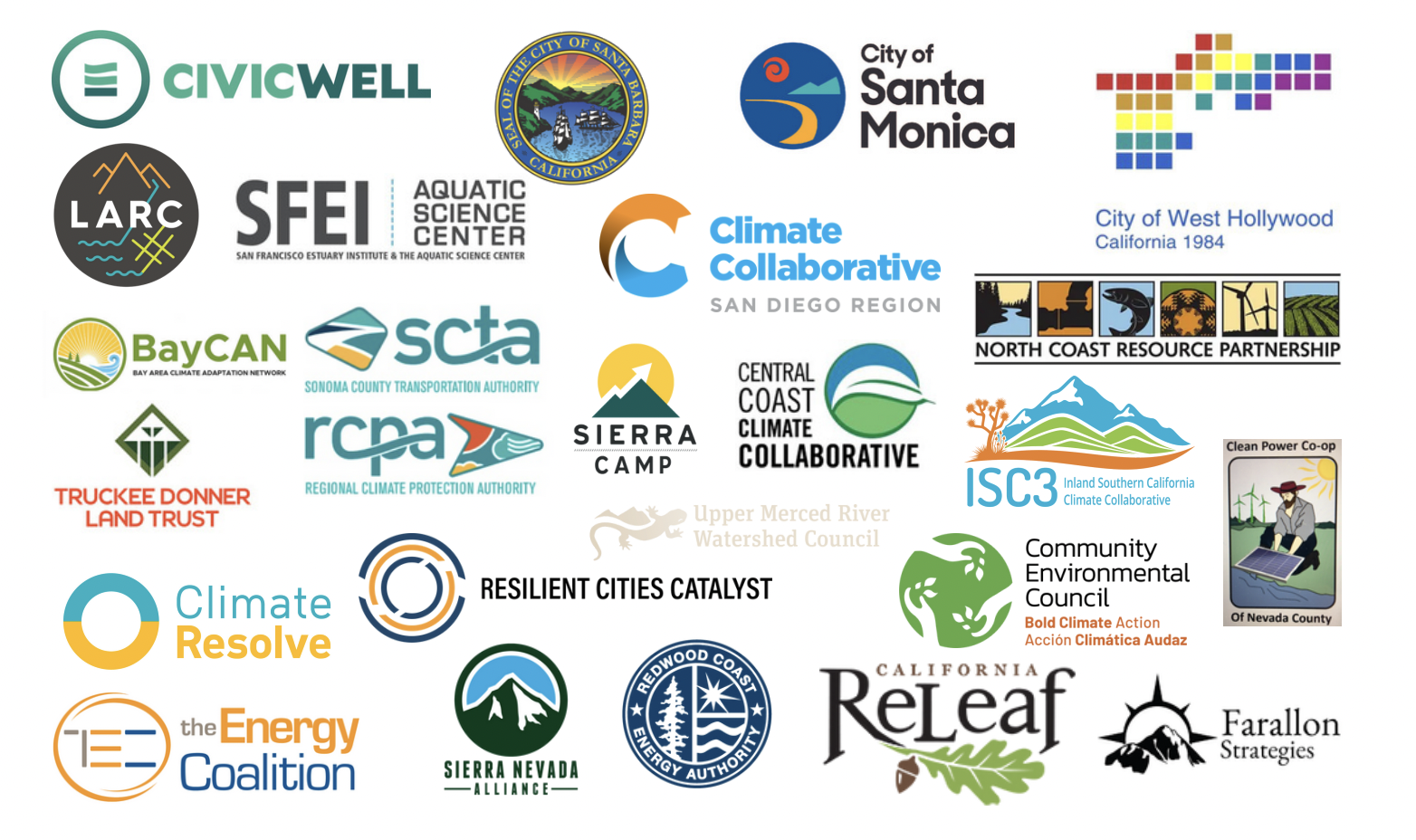
Policy Corner
As was the case last year, the Governor and Legislature are confronted again with a sizable deficit to address in the state budget. Last year, with the budget shortfall pegged at about $30 billion, the gap was closed through a combination of measures including cuts and deferrals in spending—heavily concentrated in funding for climate programs and projects—and the use of some reserves.
When Governor Gavin Newsom released his proposed budget in early January, he forecast the deficit to be $38 billion and again outlined a plan to resolve the difference through some cuts and deferrals, mostly to climate and housing programs, and the use of the state’s rainy-day reserve.
In the Governor’s proposed budget, cuts, deferrals, and transfers to climate programs totaled $6.7 billion as follows:
- $2.9 billion in cuts
- $1.9 billion in deferrals
- $1.8 billion in transfers, mostly to the Greenhouse Gas Reduction Fund (GGRF)
Among the cuts are:
- A reduction of $40 million to the Extreme Heat and Resilience Program
- A shift of $70 million and one-year delay in the Extreme Heat and Resilience Program
- A reduction of $50 million for the Regional Climate Resilience Program
- A reduction of $9.8 million for the Regional Climate Collaboratives Program
- A reduction of $350 million for watershed climate resilience programs
Housing programs also would suffer $1.2 billion in cuts including:
- A reduction of $200 million in the Infill Infrastructure Grant Program (IIGP)
- A reduction of $300 million for Regional Early Action Planning Grants (REAP 2.0)
- A reduction of $250 million for the Multifamily Housing Program
- A one-year delay in $260 million for the Homeless Housing and Assistance Program (HHAP)
At the time the Governor announced his proposed budget, the Legislative Analyst Office (LAO) projected the budget deficit would be $58 billion—$20 billion higher than the Administration’s figure. Since the Governor’s proposed budget was unveiled, the LAO has projected that the deficit has grown to $73 billion.
Due to an assessment that tax receipts will be lower by $24 billion than the Administration expects, the LAO increased its estimate of the deficit by $15 billion. To address the even larger projected deficit, the LAO has identified nearly $16 billion in one-time or temporary budget allocations that could be cut. On the list of such possible reductions are:
- $3.4 billion related to resources and climate change
- $1.7 billion for transit
- $1.8 billion for housing and homelessness assistance
The even larger projected deficit simply increases the challenge for the Governor and Legislature to balance the budget while preserving vital programs, services, and projects and maintaining some amount of reserve funds for future years.
Through March and April, legislative budget subcommittees will hold hearings to consider the cuts and other budget issues, as well as hear from the public. At the same time, additional months of revenue will be received by the state, providing a clearer picture of how much money the state will have and how large the deficit will be. By May 15, the Governor will offer a revised budget, known as the May Revise, and final negotiations will get underway to arrive at a balanced budget by June 15.
For those who are concerned about the dramatic reductions of funds for crucial state investments in addressing climate change, transportation, and housing, now is the time to let legislators know.
CivicWell and several other organizations recently submitted a letter to the Governor and state legislators recommending that climate program funding be protected as much as possible.





